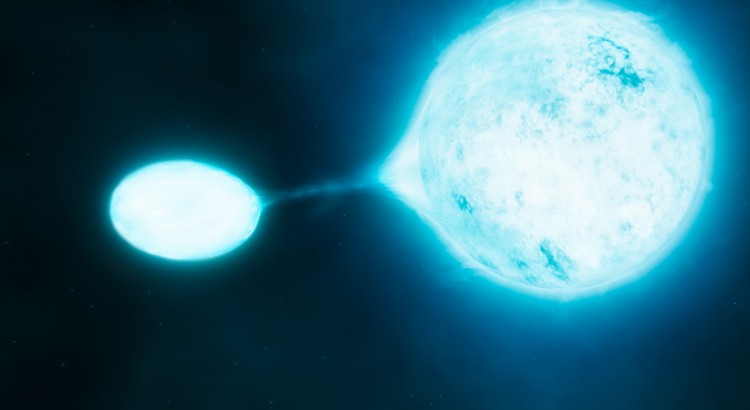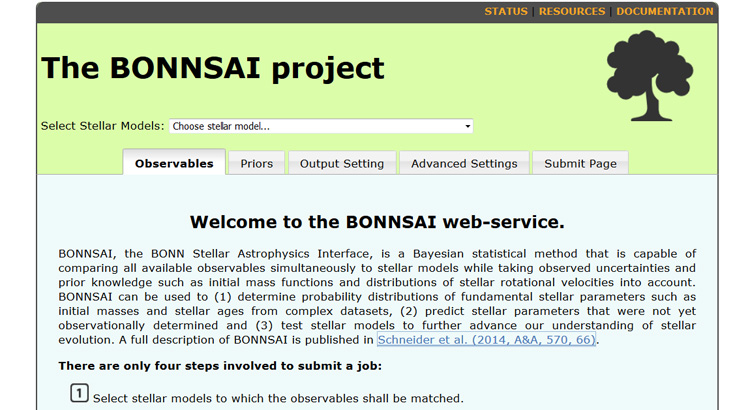It is my great pleasure to announce the launch of the BONNSAI web-service accompanying the online publication of the corresponding paper (Schneider et al., A&A, 570, A66) describing the method and its capabilities in detail. BONNSAI is a Bayesian method that allows users to match all available obserables of stars simultaneously to stellar models while taking prior knowledge properly into account to determine fundamental stellar parameters such as mass and age. It is equipped with robust Bayesian goodness-of-fit tests and provides full posterior probability distributions for inferred stellar parameters. The web-service runs on a dedicated server and is absolutely easy to use: just select a set of stellar models, provide observables, specify prior knowledge (if available) and let BONNSAI do the rest. A BONNSAI batch mode is also available on request.

Binary Interaction Dominates the Evolution of Massive Stars
Stars do not live alone–they mostly come in pairs in which mass can be transferred from one to the other star! In the Science issue from 27th July 2012, we show that the evolution of the most massive stars in the Universe, the O-stars, is dominated by binary interactions. Observations of up to ten years with the UVES spectrograph attached to the Very Large Telescope (VLT) revealed that almost three quarters of all O-stars within six Galactic star clusters have a close companion such that 70% of all O-stars will exchange mass with their companion and only 30% of all O-stars are effectively single stars. This has severe consequences for populations of massive stars, for example in star forming galaxies, supernova types and gamma-ray bursts.
To find out more, have a look into the paper and/or the press releases.
H. Sana et al., Science, DOI: 10.1126/science.1223344
University Bonn press release
ESO press release
STScI press release
